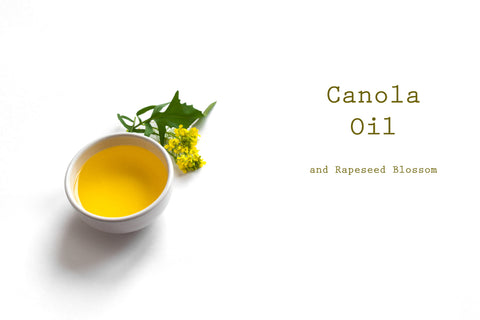Your cart is empty
Free shipping on all US orders


Free shipping on all orders

How much thought do you put into choosing cooking oils? Olive oil is healthy, we know that much, but is it the best universal oil? Turns out, the answer is no- especially if you’re going to be preparing food at higher temperatures.
Does temperature matter? Yes it does. In This blog post, we take a look at this important and underserved topic, helping you better understand the best applications of each type of oil for your benefit.
Cooking oils are fats that often remain liquid at room temperature, crucial for both the culinary experience and your daily nutrition. In your kitchen, they're indispensable for their roles in enhancing flavor, improving texture, and ensuring even cooking.

Derived from a variety of sources like seeds, nuts, fruits, and vegetables, each type of oil — whether it's olive, canola, or coconut — brings its own unique flavor profile, smoke point, and nutritional content to the table.
But what's the real deal with these oils? They're concentrated sources of fats, which are essential for your health. Fats, one of the three key macronutrients alongside proteins and carbohydrates, are essential for bodily functions. For people that are focused on overall nutrition, cooking oils tend to be one area that are overlooked.
But make no mistake, these oils play a significant role in your diet.
In terms of nutrition, fats from cooking oils are crucial for several reasons. They provide essential fatty acids that your body can't produce independently, supporting brain health and assisting with inflammation control (given that you choose the right oil).
Fats also facilitate the absorption of fat-soluble vitamins A, E, and K, ensuring you reap the full benefits of a nutrient-rich diet. Beyond nutrition, fats are a dense source of energy, offering sustained fuel and aiding in satiety after meals.
Flavor is another area where fats are unique. They have the unique ability to carry and enhance flavors, making your food not just more nutritious but also more enjoyable.
But there’s much more to these seemingly simple oils.
The smoke point of an oil is the temperature at which it begins to smoke and degrade, marking the start of both flavor and nutritional breakdown. Understanding the smoke point is crucial because it determines the suitability of an oil for various cooking methods.
Oils with high smoke points, like avocado and refined peanut oil, are ideal for high-heat cooking methods such as frying and sautéing. In contrast, oils with lower smoke points, such as extra virgin olive oil, are better suited for low-heat cooking, dressings, and drizzling.
Using an oil beyond its smoke point can lead to unpleasant flavors and the release of harmful compounds, underscoring the importance of matching the oil to the cooking method to ensure both safety and quality.
The flavor of cooking oils can significantly influence the taste of a dish. Oils can have a neutral taste, like canola or grapeseed oil, making them versatile for various culinary needs without overpowering other ingredients. On the other hand, oils like extra virgin olive oil, sesame oil, and coconut oil offer distinct flavors that can enhance the profile of a dish.
The choice of oil can be a deliberate decision to either highlight other ingredients or to bring its own character to the meal, turning the oil into a key flavor component rather than just a cooking medium.
Cooking oils are not just about their taste and cooking properties; their nutritional content is equally important. They are a primary dietary source of essential fatty acids, which are crucial for health.
Additionally, different oils contain varying levels of vitamins like Vitamin E and K, and antioxidants that can contribute to reducing inflammation and protecting against heart disease.
For instance, olive oil is renowned for its monounsaturated fats and polyphenols, while flaxseed oil is high in omega-3 fatty acids. Understanding the nutritional content helps in making informed choices that align with your health goals and dietary needs.
The fatty acid profile of an oil — its balance of saturated, monounsaturated, and polyunsaturated fats — is a key factor in its impact on heart health and stability. Saturated fats, found in higher proportions in coconut and palm oil, are generally more stable but have been associated with higher cholesterol levels.

Unsaturated fats, predominant in oils like olive and canola, are considered heart-healthy but are more prone to oxidation and rancidity. This balance not only affects the oil's health implications but also its shelf life and how it reacts to heat, making it a crucial consideration.
An oil’s Stability refers to how well it maintains its quality and nutritional integrity when stored and heated. Factors affecting stability include the oil's fatty acid composition, purity, and processing method.
Oils high in saturated fats or processed to remove impurities typically have a longer shelf life and greater heat tolerance. In contrast, unrefined oils with high levels of unsaturated fats are more nutritious but also more susceptible to oxidation and rancidity, especially if improperly stored.
Selecting an oil with appropriate stability for its intended use and storage conditions is vital to preserving both its health qualities and culinary attributes.
The cost and ease of sourcing cooking oils can influence your choice. Prices vary widely based on factors such as the oil's origin, production method, and brand. While it's tempting to opt for the cheapest option, it's important to consider the oil's source, quality, and health benefits.

Additionally, availability might vary based on geographical location and market trends. Some exotic or specialty oils might be harder to find and more expensive, whereas others like olive and vegetable oils are widely available and affordably priced. Balancing cost with quality, health benefits, and culinary needs is key to choosing the right oil within one's budget and local availability.
Extraction methods significantly influence the quality, flavor, and nutritional profile of cooking oils. The two primary methods are cold pressing and refining, each with distinct characteristics and implications for the oil produced.
Cold pressing is a mechanical extraction method where oil is pressed out of the oilseeds or nuts at a temperature typically below 120°F (49°C). This process involves grinding the seeds or nuts into a paste, and then pressing them to extract the oil. The "cold" aspect is crucial; higher temperatures can degrade the oil's flavor, nutritional value, and color.
Cold-pressed oils retain most of their natural aroma, flavor, and nutritional content, including antioxidants, vitamins, and essential fatty acids. This method doesn't use chemicals or excessive heat, which helps preserve the oil's natural properties.
The advantage of cold-pressed oils is their superior quality in terms of flavor and nutrition. They are often considered more natural and healthier compared to refined oils. However, they typically have a shorter shelf life due to the presence of impurities and organic matter that can lead to quicker rancidity. Cold-pressed oils also tend to have lower smoke points, making them more suitable for dressings, dips, and low-heat cooking.
Refining is a more complex process involving several steps: degumming, neutralizing, bleaching, and deodorizing. The primary goal is to remove impurities, free fatty acids, and other unwanted components, resulting in a cleaner, more neutral oil.
The process typically involves high temperatures and chemical agents, which can strip away some of the oil's natural flavors, colors, and nutritional components, such as vitamins and antioxidants.

Refined oils have a higher smoke point, making them more versatile for various cooking methods, especially high-heat techniques like frying and sautéing. They also have a longer shelf life and a more neutral taste, which might be preferable in dishes where a strong oil flavor isn't desired. However, the refining process can reduce the oil's nutritional profile, particularly the loss of beneficial compounds found in unrefined oils.
The extraction method plays a critical role in determining an oil's culinary applications, health benefits, and shelf life. Cold-pressed oils, while nutritionally superior, are best used in applications that require lower heat and where their distinct flavors can shine.
Refined oils, on the other hand, are more durable and versatile for high-heat cooking but come with a trade-off in terms of nutritional content and complexity of flavor.
When choosing between cold-pressed and refined oils, consider the intended use, the desired flavor profile, and the nutritional benefits you're seeking. Both types have their place in the kitchen, and understanding their differences can help you make more informed choices about which oil is best for your specific cooking needs and health preferences.
Olive oil is a staple in Mediterranean diets, renowned for its health benefits and diverse culinary uses. The three main types are:
Olive oil is rich in monounsaturated fats, particularly oleic acid, which is known for heart health benefits, such as reducing inflammation and potentially lowering the risk of heart disease. It's also packed with antioxidants like polyphenols, which have various health benefits.

Coconut oil has become popular for its unique flavor and health benefits. It comes in two main types:
Coconut oil is high in saturated fats, which have been controversial regarding heart health. Some studies suggest that the specific types of saturated fats, the medium chain triglycerides (MCTs) in coconut oil may not have the same negative effects as other saturated fats, but moderation is still advised.
Canola oil is known for its neutral taste and versatility. It has a high smoke point, making it suitable for frying, baking, and all-purpose cooking. From a health standpoint, canola oil is low in saturated fat and high in monounsaturated fats.
It also contains omega-3 fatty acids, known for their anti-inflammatory properties. However, the processing involved in refining canola oil has raised some concerns about the presence of trans fats and other compounds, so it's worth looking for cold-pressed or minimally processed varieties.

Though not an oil by definition, butter is a common fat used in cooking and baking. Made from churned cream, it's rich in saturated fats and adds a creamy, rich flavor to dishes.
Butter is ideal for baking, sautéing, and as a base for sauces. However, it has a lower smoke point compared to many oils, making it less suitable for high-heat cooking. From a health perspective, while butter provides some vitamins like A and E, its high saturated fat content has been linked to higher cholesterol levels, so it's best used in moderation.
Proper storage and understanding the shelf life of cooking oils are crucial to maintaining their quality, flavor, and nutritional value. Over time, exposure to air, light, and heat can cause oils to degrade, leading to rancidity and the development of off-flavors and potentially harmful compounds.
Remember, using rancid oil isn't just a culinary concern; it can also pose health risks due to the potential formation of harmful compounds. Regularly checking your oils, storing them properly, and being mindful of their shelf life will help ensure that you're using them at their best — both for your health and your taste buds.
Always be sure to balance out the consumption of fats by including lots of fiber-rich foods, including Field of Greens if you struggle to get enough plant based nutrition.
You will notice the exception of soya bean oil, which, while still very popular, is rife with potential issues related to consumption and better to be avoided altogether.
The oils from the list above are all ok for consumption in moderation since they still yield a massive 9 calories per gram when consumed. However, the importance of dietary fats cannot be overlooked, and it largely comes down to moderation.